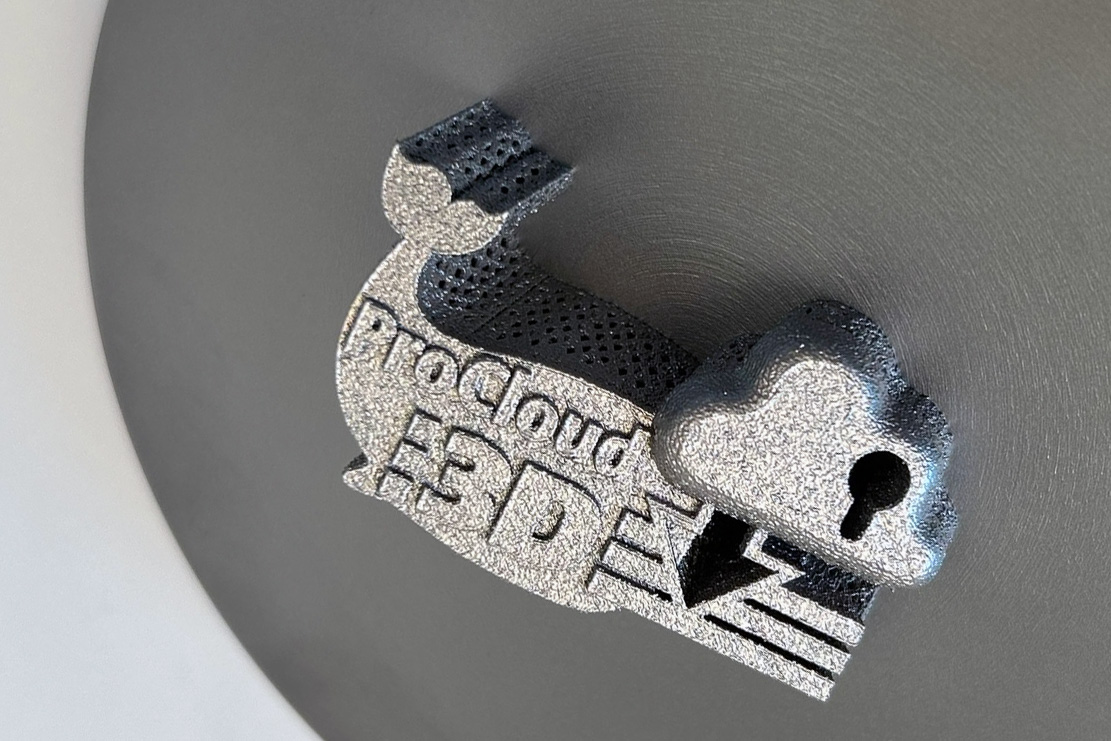As software plays an increasing role in the workflow for industrial additive manufacturing (AM), we’re seeing such software-driven workflows formalized into secure, end-to-end systems. Typically, the go-to example is that of Materialise, whose CO-AM platform aims to tackle every link on the AM production chain. However, new solutions are emerging, such as tools from Hexagon and, now, the ProCloud3D project, developed by a German-Chinese consortium led by the Chair of Digital Additive Production (DAP) at RWTH Aachen University.
ProCloud3D is meant to be a secure, cloud-based platform capable of real-time, encrypted transmission of production data for laser powder bed fusion (LPBF) for metal parts. Funded by Germany’s Federal Ministry of Education and Research (BMBF), the solution enables direct, layer-by-layer data transmission to service providers’ PBF machines, ensuring the data remains inviolable from external threats and manipulations while maintaining strict production quotas.

Interestingly, the idea of direct transmission of layer data to 3D printers isn’t entirely new, with some manufacturing execution systems streaming toolpaths directly to the machine. The latest example comes from Würth Additive’s Digital Inventory Services. In the case of ProCloud3D, a real-time slicer generates machine control code from construction job information. The platform’s architecture leverages the Open Vector Format (OVF), enhancing the flexibility in laser control and scan field management.
The culmination of the project was the successful manufacturing of a demonstrator through the secure stream, illustrating the platform’s efficacy and setting the stage for widespread adoption in decentralized additive manufacturing. The consortium behind ProCloud3D is an interesting one, made up of WIBU-Systems, Laser Melting Innovations (LMI), RWTH Aachen’s DAP, Beijing University of Technology, Xi’an Bright Laser Technologies (BLT), Nanjing 1001 Automation Technology Co, and Beijing Aerospace Smart Manufacturing Technology Development Company.
Because BLT has grown so rapidly, the Chinese LPBF manufacturer and service provider’s role underscore’s its expansion in Western markets. It is now at such a level that the German government is funding its efforts with local firms. Additionally, the collaboration seems set to enhance the use of AM by both Chinese and European aerospace industries, given the fact that Airbus is one of BLT’s most important customers. In other words, we can see the cross-pollination of the Chinese and European aerospace sectors by this consortium.
Another interesting detail is the fact that LMI makes the lower-cost LPBF systems that are sold by Würth Additive under the Kurtz Ersa brand, so there may very well be an overlap between Würth’s Digital Inventory Services and ProCloud3D. Even if there is not, the parallel approaches to file streaming suggest the emergence of a de facto standard for file security necessary for aerospace and likely defense 3D printing and distributed manufacturing as a whole.
Subscribe to Our Email Newsletter
Stay up-to-date on all the latest news from the 3D printing industry and receive information and offers from third party vendors.
You May Also Like
Model No. Deploys Titan Pellet 3D Printers for Sustainable Furniture Production
Over the years, many designers have tried to create 3D printed polymer furniture. Early pioneers like Janne Kyttanen, Materialise’s MGX, and Joris Laarman have led the way with 3D printed...
3D Printing News Unpeeled: Recycling PLA, More Efficient Atomizing
Filamentive hopes to recycle your PLA if you’re in the UK and order over £500 worth of filament. Their partner 3D Printing Waste (3DPW) will turn the PLA into injection...
Lighting the Way with Potato Starch: Sustainable Polish ECO Lamps Use 3D Printing
Lighting that meets the essence of nature: this is the reality brought to life by ECO Lamps, which introduces a fresh perspective to sustainable lighting design using potato starch. These...
3D Printing News Unpeeled: 3D Printed Construction Standard, Sand Wall & Self Heating Microfluidics
ISO/ASTM Standard 52939:2023 has been released and it sets standards for QA for 3D Printed polymer, composite and cement buildings. This is most welcome since 3D printed construction is a...
































